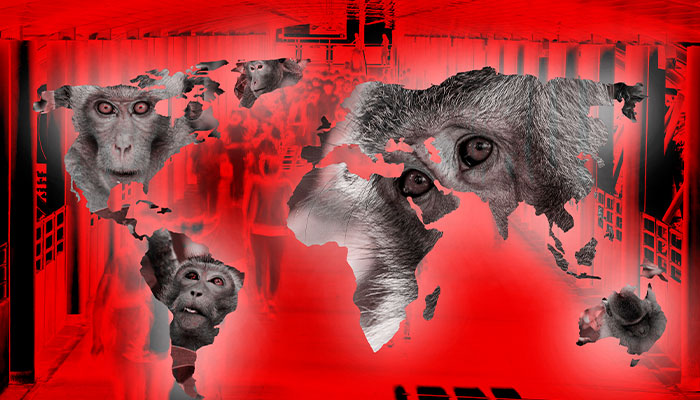Globally, infectious disease is the leading cause of child and adolescent mortality and one of the leading causes of adult deaths. Despite advances in vaccination and treatment, infectious disease transmission is increasing because of the globalisation of human disease ecologies.

High risk: billions of people flying all over the globe each year is one of the leading factors in the spread of infectious diseases, says Wynn.
One of the biggest factors is passenger air travel. It has more than doubled over the past two decades. In 2017, 3,979,000,000 people flew in planes. That's nearly 4 billion! And when these people fly on planes internationally, they carry microbes with them that previously circulated in a region or country but are now transferred to new parts of the globe where they continue to spread.
And those bugs, as we know, can also be spread during a flight, even before an infected person reaches their destination.
Several studies have looked at how people move through planes and calculated that there is always an increased risk of catching a cold on a plane.
If there is an infectious person on your flight, you are more likely to get sick if you are within a 2-row radius of them, and your chances of getting sick increase when you use the bathrooms, making long-haul flights more risky than shorter flights.
The result is that we live in an era of unprecedented global infectious disease transmission, according to the World Health Organisation. In the first two decades of this millennium, the world has seen novel infectious disease epidemics and pandemics including SARS, Avian Influenza, Swine Flu, Ebola, MERS, Zika, COVID-19, and recurring epidemics of cholera, yellow fever, and bubonic plague.
When these people fly on planes internationally, they carry microbes with them and transfer them to new parts of the globe.
With every breath of air and mouthful of food or water, each human takes in a host of potentially pathogenic microbes – viruses, bacteria, protozoa, fungi and prions – most of which science knows little about. And if science knows little, the average human knows much less.
A massive roster of disease
Even countries with the highest COVID-19 testing rates only test a small portion of the population, and where testing is based on symptoms, most of those tested do not have COVID. Consider that: out of all the people who have symptoms that seem like they could be COVID-19, the vast majority of them don't. They have other various 'colds' and 'flus' and who knows what else.

Invisible monsters: a large range of infectious diseases is lurking in a population at any given time and strikes in alarmingly unpredictable fashion, writes Wynn.
Meanwhile, those who have tested positive for COVID-19 have manifested a gamut of symptoms and illness severity. Some studies show that up to half of those with the virus are asymptomatic.
Pathologists are our shamans, epidemiologists are our diviners, hand sanitiser is ‘the most sacred goo of our era’
As one circulating meme points out, COVID-19 is ‘Schrodinger’s Virus’: most of us can’t be tested so we don’t know if we have it or not, and we have to simultaneously act as if we have COVID-19 (so that we don’t get others sick) and as if we don’t (because if we haven’t had it, we’re not immune).
The mystery over what disease agents cause illness means that humans are constantly engaged in interpretive work as they try to reconcile the symptoms they experience with their understandings of disease agents and transmission.
Even in a single country, we see considerable variability in the folk taxonomies used to interpret common symptoms of illness. What one person calls ‘a bad cold’, someone else might call ‘the flu’ -- yet in the majority of cases, healthcare professionals will never actually diagnose a specific microorganism.
- Mental health strategies for workers on the new frontline
- From Tiger King to COVID-19, can't tigers catch a break?
In short, our responses to the fundamental uncertainties around COVID are simultaneously superstitious and scientific. Infectious disease is the invisible monster of our modern society, the black magic that strikes down healthy and sick, old and young, in ways that are alarmingly unpredictable.
Pathologists are our shamans, epidemiologists are our diviners, hand sanitiser is ‘the most sacred goo of our era’, and in this COVID era, we are all caught up in the witch hunt for those who socialise while sick and who hoard toilet paper and face masks.
Newspapers, social media, and memes continually socialise us (and we socialise each other) into appropriate virtue signalling by telling stories about staying home and shaming those who crowd public parks and beaches.
Lisa Wynn is Associate Professor in the Department of Anthropology at Macquarie University.



